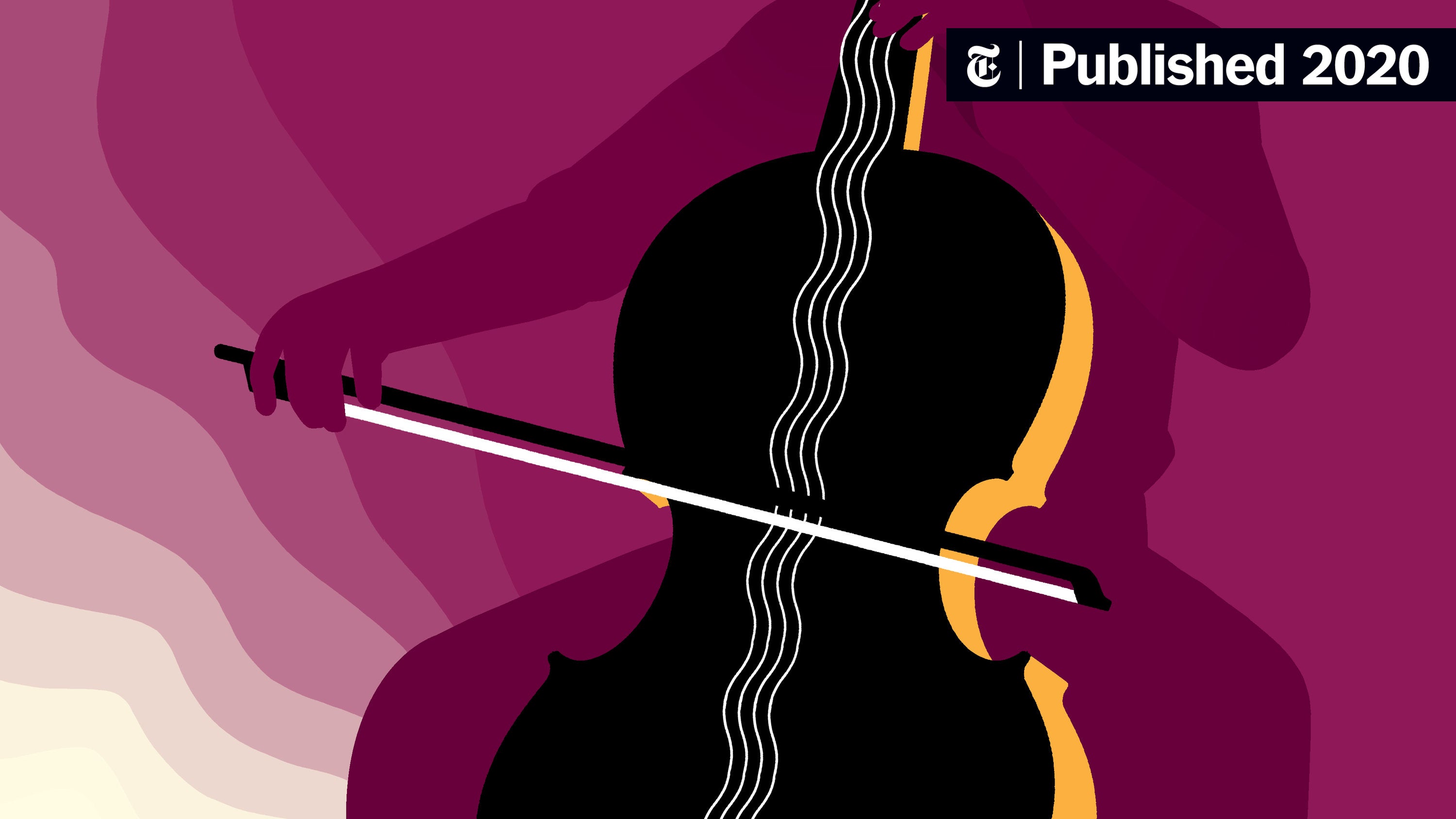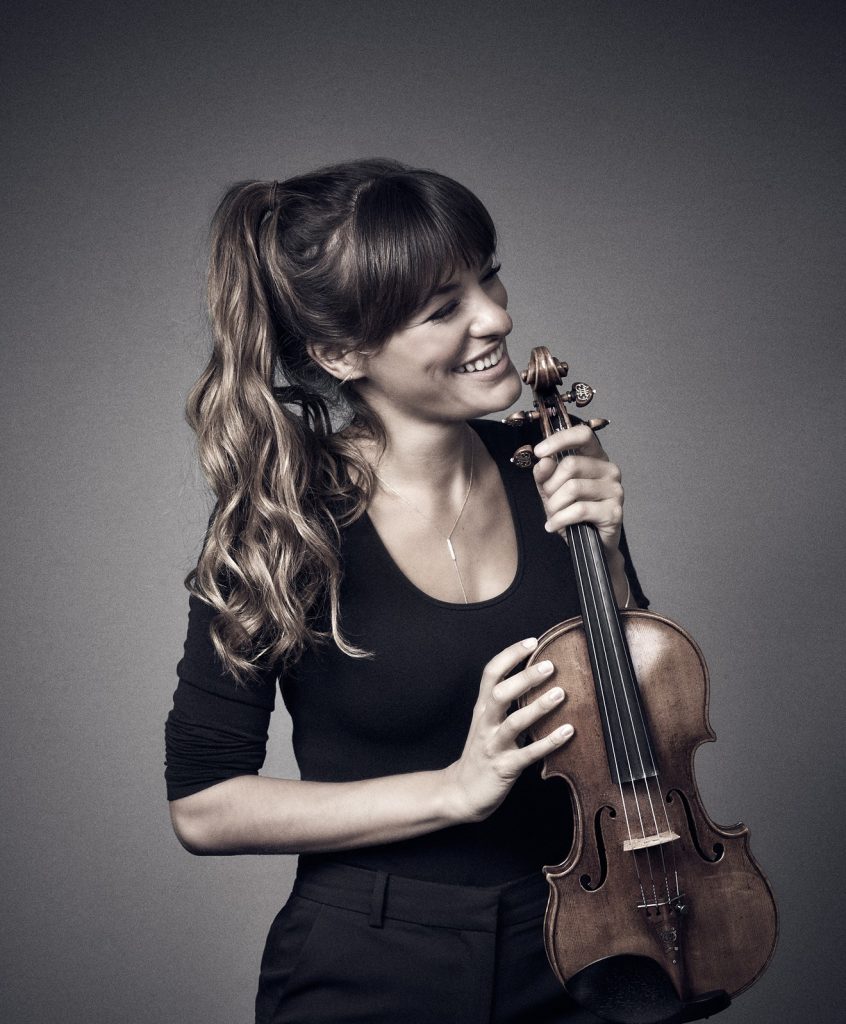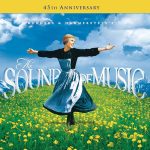Modern music with the violin incorporates a diverse range of genres and styles, showcasing the versatility of this classical instrument. From classical compositions to contemporary pop, rock, jazz, and folk music, the violin adds a unique and vibrant sound to various musical genres.
This ancient instrument has undergone significant evolution and adaptations over the years, leading to its integration into modern music production, live performances, and recordings. Whether it’s the soaring melodic lines in orchestral arrangements, the driving rhythm in folk tunes, or the electrifying solos in rock concerts, the violin continues to captivate audiences and contribute to the ever-evolving world of modern music.

Credit: www.nytimes.com
The Evolution Of Violin In Modern Music
The violin, with its rich history and timeless appeal, has made a significant impact on modern music. From its early adoption in contemporary genres to the fusion of traditional and innovative styles, the violin continues to captivate listeners with its versatility and charm.
Early Adoption Of The Violin In Contemporary Genres
- In the early 20th century, the violin started making its way into various contemporary genres, expanding beyond its classical roots.
- Jazz pioneers like joe venuti and stuff smith embraced the violin’s expressive qualities and implemented its melodic capabilities in their improvisations.
- With the emergence of electric violins in the 1950s, musicians began experimenting with amplified sounds, pushing the boundaries of the traditional instrument.
- Today, the violin can be found in genres such as rock, pop, folk, and even hip-hop, enriching compositions with its unique timbre and versatility.
Influence Of Classical Violin Techniques In Modern Compositions
- Classical violin techniques have left an indelible mark on modern compositions, shaping the way musicians approach the instrument.
- Virtuosic techniques such as vibrato, double stops, and pizzicato have become integral elements in contemporary violin music.
- Composers and performers draw inspiration from classical pieces and build upon these techniques to create innovative and emotive modern compositions.
- The influence of classical violinists like niccolò paganini and jascha heifetz can be heard in the expressive playing styles adopted by modern violinists.
Fusion Of Traditional And Innovative Styles In Modern Violin Music
- Modern violin music can be characterized by the fusion of traditional and innovative styles, taking the instrument in exciting new directions.
- Musicians experiment with blending classical violin techniques with elements of jazz, electronic music, and world music, resulting in a fresh and dynamic sound.
- Collaborations between violinists and artists from different genres lead to the creation of compelling cross-genre compositions.
- The use of loop pedals, effects processors, and unconventional playing techniques adds an experimental and captivating dimension to modern violin music.
The evolution of the violin in modern music showcases the instrument’s adaptability and its ability to transcend boundaries. Whether it’s through early adoption in contemporary genres, the influence of classical techniques, or the fusion of traditional and innovative styles, the violin continues to inspire and captivate audiences, proving that it is an instrument of endless possibilities.
Notable Contemporary Violinists Pushing Boundaries
Exploring Diverse Genres With The Violin As A Lead Instrument
- The violin, often associated with classical music, has made its mark in various other genres as well. Here are some notable contemporary violinists who have pushed the boundaries and expanded the violin’s role as a lead instrument:
- Lindsey stirling: Known for her unique style of fusing classical music with electronic dance beats, stirling has gained a massive following with her energetic performances. She effortlessly combines genres like pop, rock, and dubstep, creating a fresh and modern sound.
- Owen pallett: Pallett is not only a skilled violinist but also a talented singer-songwriter. He’s known for incorporating the violin as a central element in his indie-pop compositions. Pallett’s use of looping and layering techniques allows him to create rich and intricate soundscapes.
- Kishi bashi: This multi-instrumentalist is known for his innovative use of the violin in indie and experimental pop music. Kishi bashi masterfully blends various genres, including folk, electronic, and orchestral, creating a mesmerizing and immersive experience for the listener.
Incorporating Electronic Elements Into Violin Performances
- With the advancement of technology, many contemporary violinists have embraced electronic elements to enhance their performances. Here’s how they are incorporating these elements into their violin playing:
- Looping: Looping allows violinists to record and layer different parts of their performance on the spot. By incorporating loop pedals and other electronic devices, they can create complex and layered soundscapes that would otherwise be impossible to achieve with just the violin alone.
- Effects pedals: Violinists are now using effects pedals to alter the sound of their instrument in real-time. This opens up a whole new range of possibilities, allowing them to experiment with distortion, reverb, delay, and other effects, adding depth and texture to their performances.
- Sampling: Some violinists are incorporating sampled sounds into their performances, adding a unique and modern twist to their music. By blending pre-recorded samples with live violin playing, they can create a seamless integration of acoustic and electronic elements.
Pushing The Limits Of Technicality And Virtuosity In Modern Violin Playing
- In the world of contemporary violin playing, there are virtuosos who are constantly pushing the boundaries of technicality and showcasing their incredible skills. Here are some musicians who have taken modern violin playing to new heights:
- Ara malikian: Malikian is renowned for his captivating performances and his ability to effortlessly navigate through various musical styles. His mixture of classical training with rock, jazz, and world music influences is a testament to his versatility as a violinist.
- Hilary hahn: Hahn is known for her exceptional technique and musicality. She constantly challenges herself with demanding repertoire and is recognized for her interpretation of contemporary classical music. Hahn’s dedication to pushing the limits of technicality has firmly established her as one of the leading violinists of her generation.
- David garrett: With his rockstar persona and virtuosic playing, david garrett has gained a global following. He effortlessly transitions between classical and popular music, pushing the boundaries of what is possible on the violin. Garrett’s electrifying performances showcase his exceptional technical prowess and showmanship.
By exploring diverse genres, incorporating electronic elements, and pushing the limits of technicality and virtuosity, these contemporary violinists are redefining the role of the violin in modern music. Their innovative approaches captivate audiences and demonstrate the instrument’s versatility as a lead instrument in various genres.
Whether it’s through fusion, experimentation, or sheer technical mastery, these violinists continue to push boundaries and inspire future generations of musicians.
The Impact Of Modern Violin On Popular Music Culture
The violin, with its rich history and timeless elegance, has found new expression in the realm of modern pop music. This instrument, traditionally associated with orchestras and classical compositions, has transcended genres and captivated audiences with its unique sound. In this section, we will explore the impact of modern violin on popular music culture, focusing on collaborations between violinists and popular artists, the violin as a symbol of uniqueness and versatility in modern pop music, and the rise of viral violin covers and performances on social media platforms.
Collaborations Between Violinists And Popular Artists
- The blending of classical and contemporary styles: Violinists collaborating with popular artists have successfully merged the traditional sound of the violin with modern genres such as hip-hop, edm, and pop.
- Introducing new elements to popular tracks: These collaborations have allowed violinists to add a touch of elegance and sophistication to popular songs, creating a unique fusion of styles.
- Expanding the boundaries of creativity: Collaborations between violinists and popular artists have opened doors to experimentation and innovation, redefining the possibilities of music creation.
The Violin As A Symbol Of Uniqueness And Versatility In Modern Pop Music
- Unconventional sounds in mainstream music: The violin’s inclusion in popular tracks brings an element of surprise and distinctiveness, setting them apart from the ordinary.
- Adding emotional depth to lyrics: The violin’s ability to convey a wide range of emotions resonates with listeners, enhancing the storytelling aspect of modern pop music.
- A versatile instrument for various genres: From ballads to energetic dance tracks, the violin seamlessly adapts to different musical styles, making it a sought-after instrument among pop musicians.
The Rise Of Viral Violin Covers And Performances On Social Media Platforms
- Connecting with a global audience: Social media platforms have provided violinists with a powerful tool to showcase their talent to millions worldwide, allowing for greater exposure and recognition.
- Revitalizing classic tunes: Through viral violin covers, musicians breathe new life into well-known songs, attracting a new generation of listeners to timeless melodies.
- Inspiring aspiring musicians: The popularity of violin covers has inspired a new wave of young musicians to pick up the instrument, fueling a renewed interest in violin education and training.
The modern violin has made an indelible mark on popular music culture, transcending boundaries and capturing the hearts of listeners. Collaborations between violinists and popular artists have yielded remarkable musical creations, while the violin’s unique sound and versatility ensure its place in modern pop music.
Furthermore, the rise of viral violin covers and performances on social media platforms has opened new avenues for musical expression, connecting musicians with a global audience and inspiring future generations of violinists.
The Use Of Violin In Film Scores And Soundtracks
———————————————————–
Creating Emotional Depth Through Violin-Driven Film Music
———————————————————–
The violin has long been regarded as an instrument capable of evoking strong emotions. In the realm of film scores and soundtracks, this quality is harnessed to create a wide range of emotional depth. Here are a few key ways in which the violin contributes to the emotional impact of film music:
- Expressive melodies: The violin’s ability to produce nuanced and expressive melodies makes it an ideal choice for conveying emotions such as love, longing, and sadness. The instrument’s rich tonal qualities and the dexterity of skilled violinists allow for the creation of melodies that tug at the heartstrings.
- Enhancing dramatic moments: The soaring, poignant sound of the violin can heighten the impact of pivotal moments in a film. Whether it’s building suspense, amplifying the intensity of an action sequence, or magnifying the impact of a dramatic revelation, the violin has the power to captivate the audience and elicit strong emotional responses.
- Conveying intimacy and vulnerability: In quieter, more intimate scenes, the violin can evoke a sense of vulnerability and tenderness. Its warm and delicate timbre can create an emotional connection between the characters and the viewers, enhancing the overall cinematic experience.
Iconic Film Scores Featuring The Violin As A Prominent Instrument
—————————————————————
The violin’s versatility and ability to convey a wide range of emotions have made it a favorite among composers for crafting memorable film scores. Here are some iconic examples of film scores that prominently feature the violin:
- Schindler’s list: John williams’ hauntingly beautiful score for “schindler’s list” relies heavily on the violin to capture the profound tragedy and resilience depicted in the film. The mournful melodies produced by the violin add a layer of raw emotion that echoes the harrowing events of the holocaust.
- The red violin: In this film, the violin itself takes on a central role, serving as a symbolic thread interconnecting several stories across different time periods. Composed by john corigliano, the score showcases the violin’s ability to convey everything from passion to melancholy as it weaves its musical narrative.
- Psycho: Bernard herrmann’s iconic score for alfred hitchcock’s “psycho” is known for its use of piercing, screeching violin strings. This chilling auditory motif has become synonymous with suspense and terror, intensifying the psychological impact of the film.
The versatility of the violin in capturing different moods and atmospheres
————————————————————————-
One of the remarkable aspects of the violin is its versatility in capturing different moods and atmospheres within film music. Whether it’s a joyous celebration, a suspenseful chase, or a heart-wrenching tragedy, the violin has the capacity to adapt and enhance the emotional landscape of a film.
Here are a few examples of the violin’s versatility:
- The grand budapest hotel: Alexandre desplat’s whimsical score for “the grand budapest hotel” uses the violin to evoke both a sense of nostalgia and playfulness. The instrument’s light and lively character perfectly complements the film’s quirky and visually vibrant storytelling.
- Pride and prejudice: Dario marianelli’s score for the film adaptation of jane austen’s classic novel beautifully captures the elegance and romance of the regency period. With the violin as a prominent instrument, the music transports listeners to a bygone era of love and courtship.
- Requiem for a dream: Clint mansell’s haunting score for the film “requiem for a dream” features a violin-driven melody that intensifies the film’s dark and harrowing themes. The instrument’s mournful sound serves as a chilling reflection of the characters’ descent into addiction and despair.
The violin’s presence in film scores and soundtracks is undeniable. Its expressive capabilities, ability to evoke emotions, and versatility in capturing different moods make it a vital component of the cinematic experience. Whether it’s driving the narrative forward, enhancing dramatic moments, or conveying the depths of human emotion, the violin continues to play an indelible role in the realm of modern music in film.
The Role Of Technology In Modern Violin Performance
The violin is an instrument that has been around for centuries, captivating audiences with its beautiful melodies and expressive qualities. In recent years, the role of technology in violin performance has expanded, allowing musicians to explore new horizons and push the boundaries of traditional playing techniques.
Innovative equipment and effects, the integration of digital sound manipulation, and advancements in technology have all contributed to expanding the expressive capabilities of the violin in the modern music landscape.
Innovative Equipment And Effects Used In Modern Violin Playing:
- Electric violins: Electric violins have gained popularity among modern musicians for their versatility and ability to produce a wide range of sounds. They can be easily amplified, allowing violinists to perform in larger venues and alongside louder instruments.
- Pedal effects: Violinists now have access to a variety of pedal effects similar to those used by guitarists. These effects pedals can enhance the sound of the violin, adding elements such as reverb, delay, distortion, and modulation. It allows violinists to experiment with different tones and create unique soundscapes.
- Loop pedals: Loop pedals enable violinists to record and layer different musical phrases to build complex arrangements. This technology opens up possibilities for solo performances, allowing a single musician to create and accompany themselves with multiple layers of sound.
The Integration Of Digital Sound Manipulation With The Violin:
- Midi technology: By utilizing midi (musical instrument digital interface) technology, violinists can connect their instruments to computers and synthesizers, expanding the range of sounds they can produce. This integration allows for the creation of orchestral textures, electronic effects, and a wide array of synthesized sounds.
- Sampling and sound libraries: Violinists can now access extensive libraries of sampled instruments, including different types of violins, string ensembles, and even entirely different instruments. These samples can be triggered and played through the violin, providing a vast array of sonic possibilities to explore.
- Real-time sound manipulation: With the help of software and plugins, violinists can manipulate the sound of their instrument in real-time. This can involve adjusting parameters such as eq, dynamics, and spatial effects to create unique and expressive performances.
Expanding The Expressive Capabilities Of The Violin Through Technological Advancements:
- Extended techniques: Technology has enabled violinists to explore new playing techniques that were previously unattainable. This includes techniques such as bowing the strings behind the bridge, producing harmonics, or using unconventional bowing methods. These experimental techniques open up new avenues for musical expression and creativity.
- Performance visualizations: Through the use of projection mapping or led sensors on the violin, performers can enhance their live shows with visual representations of their playing. This visual feedback adds an extra layer of engagement and spectacle to the performance, captivating the audience’s attention.
- Collaborative opportunities: Technology has also made it easier for violinists to collaborate with musicians from different genres and backgrounds. Remote recording sessions and live-streamed performances are now common, allowing violinists to work with artists from around the world and expand their musical horizons.
The role of technology in modern violin performance is continually evolving, offering exciting possibilities for musicians to experiment and innovate. With innovative equipment, digital sound manipulation, and expanded expressive capabilities, the violin is embracing the modern music landscape while still maintaining its timeless charm.
Modern Violin Ensembles And Orchestras
The Emergence Of Contemporary Ensembles Focusing On Violin Performance
——————————————————
Modern music with violin has seen the rise of new ensembles and orchestras that prioritize the violin as the central instrument. These groups embrace the blending of classical and modern musical elements, creating a unique and captivating experience for audiences.
Let’s explore the key points about these contemporary violin ensembles and orchestras:
- The popularity of contemporary violin ensembles has increased in recent years, showcasing the versatility and expressive nature of this beautiful instrument.
- These ensembles often consist of a group of highly skilled violinists who have a shared passion for pushing musical boundaries and exploring innovative sounds.
- Many contemporary violin ensembles are pushing the boundaries of classical music by incorporating elements of different genres such as jazz, rock, and electronic music, creating a captivating fusion of styles.
- These ensembles are known for their captivating performances, allowing the violin to take center stage, captivating audiences with its melodies and rich tones.
- The emergence of contemporary ensembles focusing on violin performance has opened up new opportunities for violinists to collaborate and explore new musical landscapes, expanding their artistic horizons.
Mixing Classical And Modern Repertoire In Violin Orchestras
——————————————————
The blending of classical and modern repertoire is a hallmark of modern violin orchestras. These orchestras not only perform traditional classical pieces but also embrace contemporary compositions, making the violin a prominent instrument in both styles. Here are some key points about this blending of repertoire:
- Modern violin orchestras showcase the wide range of the violin’s capabilities by encompassing both classical masterpieces and modern compositions.
- By incorporating modern repertoire, these orchestras make classical music more accessible and relevant to contemporary audiences.
- Violin orchestras often perform works that have been specifically composed for them, allowing for greater experimentation with contemporary compositions.
- The inclusion of modern repertoire in violin orchestras attracts a diverse audience, appealing to both classical music enthusiasts and those who are more inclined towards modern genres.
- Mixing classical and modern repertoire in violin orchestras creates a dynamic and evolving musical experience, bridging the gap between tradition and innovation.
Collaborations Between Violin Ensembles And Other Instrumental Groups
———————————————————————-
Collaborations between violin ensembles and other instrumental groups contribute to the richness and diversity of modern music with violin. By combining the unique timbre of the violin with other instruments, these collaborations result in breathtaking musical creations. Here are some key points about these collaborations:
- Collaborations between violin ensembles and other instrumental groups allow for the exploration of different musical textures and combinations.
- These collaborations often involve ensembles such as string quartets, symphony orchestras, jazz bands, or even experimental music groups, creating a fusion of styles and genres.
- By working with other instrumental groups, violin ensembles can create a harmonious balance of sound, enhancing the overall musical experience.
- Collaborations also provide opportunities for musicians to learn from one another, breaching musical boundaries and expanding their creative horizons.
- The result of collaborations between violin ensembles and other instrumental groups is a vibrant and captivating musical experience that pushes the boundaries of traditional music.
With the emergence of contemporary ensembles, the blending of classical and modern repertoire, and collaborations between violin ensembles and other instrumental groups, modern music with violin is thriving. These innovations in the world of violin performance continue to captivate audiences and push the boundaries of musical expression.
Exploring The Subgenres Of Modern Violin Music
Modern Music With Violin
The violin has a rich history and has long been associated with classical music. However, in recent decades, it has found its way into various modern genres, pushing musical boundaries and captivating audiences. In this section, we will explore the subgenres of modern violin music, delving into jazz fusion, rock and metal influences, and experimental avant-garde compositions.
Jazz Fusion And The Improvisational Nature Of Modern Violin Playing
- Jazz fusion has embraced the violin, incorporating it into the genre’s intricate melodies and improvisational nature. Here are some key points:
- Violinists in jazz fusion bring their unique style of play, infusing the music with soulful and expressive performances.
- Improvisation is at the heart of jazz fusion, and violinists skillfully navigate through complex chord progressions, adding their own flair to the music.
- Violinists in jazz fusion bands often experiment with various effects pedals and amplification techniques to create new sounds and textures.
- The violin’s ability to mimic the human voice adds an extra layer of emotion to jazz fusion compositions.
Rock And Metal Influences In Violin-Driven Music
- Violin-driven rock and metal have gained popularity, injecting a fresh sound into these genres. Here are some key points:
- Violinists in rock and metal bands bring an electrifying energy to the stage, shredding riffs and captivating audiences with their virtuosity.
- The violin’s versatility allows it to seamlessly blend with heavy guitar riffs and pounding drums, creating a unique and powerful sound.
- Violin-driven rock and metal compositions often feature fast-paced solos and intense melodies, showcasing the instrument’s technical capabilities.
- By incorporating the violin into rock and metal, musicians expand the sonic possibilities, bridging the gap between classical and contemporary music.
Experimental And Avant-Garde Violin Compositions Pushing Creative Boundaries
- In the realm of experimental and avant-garde music, the violin takes on new forms, pushing creative boundaries and challenging traditional notions. Here are some key points:
- Experimental violin compositions often explore unconventional techniques, such as extended techniques, prepared violin, and bowing techniques, creating unique and otherworldly sounds.
- Avant-garde violinists push the limits of composition, incorporating elements of noise, dissonance, and unconventional time signatures into their works.
- Collaborations between violinists and electronic musicians further expand the horizons of experimental violin music, incorporating electronic effects and manipulating sounds in real-time.
- Through their innovative approach, experimental and avant-garde violinists have opened up new avenues for artistic expression and challenged the status quo.
The violin’s role in modern music extends far beyond classical traditions. From jazz fusion to rock and metal influences, and experimental avant-garde compositions, the violin continues to captivate audiences with its versatility and ability to push creative boundaries. Whether it’s the soulful melodies of jazz fusion, the electrifying energy of rock and metal, or the experimental sounds of avant-garde compositions, the violin remains a powerful and compelling instrument in the modern music landscape.
The Future Of Modern Violin: Innovations And Possibilities
The world of music is constantly evolving, and the violin is no exception to this trend. As technology advances and boundaries are pushed, the possibilities for modern violin music seem endless. In this blog post, we will explore the uncharted territories in violin music, discuss the potential for further technology integration and hybrid performances, and delve into how experimentation and collaboration are shaping the future of violin playing.
Exploring Uncharted Territories In Violin Music:
- Fusing genres: Traditional classical music is merging with various genres such as jazz, rock, and electronic music, creating unique and compelling fusions that expand the violin’s sonic capabilities.
- Alternative techniques: Modern violinists are pushing the boundaries of traditional technique, exploring unconventional bowing and fingering techniques to produce innovative and captivating sounds.
- Extended techniques: Musicians are experimenting with extended techniques such as harmonics, glissandos, and pizzicato to add a new dimension to violin music.
- Incorporating non-traditional elements: The use of loops, effects pedals, and electronic manipulation is becoming more prevalent, allowing violinists to create complex layers and textures that were once unimaginable.
The Potential For Further Technology Integration And Hybrid Performances:
- Digital innovations: With the advent of digital technology, violinists can now explore a myriad of possibilities. From midi controllers and digital effects to virtual instruments, technology is reshaping the way the violin is played and perceived.
- Collaborations with technology experts: Musicians are teaming up with technology experts to develop new tools and instruments that expand the violin’s capabilities even further. This collaboration has led to the creation of innovative devices like electric violins, 3d-printed instruments, and computer-generated compositions.
- Virtual reality and augmented reality: Imagine attending a virtual concert where you can interact with holographic violinists or stepping into a world where the boundaries of reality and music blend seamlessly. Virtual reality and augmented reality have the potential to revolutionize the violin performance experience.
Shaping The Future Of Violin Playing Through Experimentation And Collaboration:
- Cross-genre collaborations: Violinists are no longer confined to classical ensembles but are collaborating with musicians from diverse backgrounds. This cross-pollination of ideas and styles fuels creativity and opens up new possibilities for violin music.
- Exploring new performance spaces: Traditional concert halls are no longer the only stage for violin performances. Musicians are exploring alternative venues such as art galleries, cafes, and outdoor spaces, creating unique and immersive experiences for their audiences.
- Educational initiatives: Teaching methods are evolving to inspire the next generation of violinists. Contemporary approaches blend classical techniques with innovative concepts, encouraging creativity and exploration from an early age.
The future of modern violin is an exciting prospect, where innovation and tradition collide. As technology continues to advance and musicians embrace experimentation and collaboration, the boundaries of what is possible with the violin will continue to expand. Whether through uncharted territories in music, technology integration, or collaboration across genres, the future of violin playing holds immense potential for creativity and growth.
Frequently Asked Questions Of Modern Music With Violin
What Is Modern Music With Violin?
Modern music with violin refers to contemporary compositions and performances that incorporate the violin as a primary instrument. It blends classical techniques with various genres like jazz, rock, pop, and electronic music, resulting in a unique and innovative musical experience.
How Is Modern Music With Violin Different From Classical Music?
Unlike classical music, modern music with violin experiments with unconventional techniques, sounds, and styles. It embraces improvisation, employs electronic effects, and blends with different genres, providing a fresh and contemporary take on violin music.
Who Are Some Famous Modern Violin Artists?
Some renowned modern violin artists include lindsey stirling, david garrett, vanessa-mae, and nigel kennedy. They have gained popularity for their fusion of classical violin with modern styles, captivating audiences with their virtuosity and innovative performances.
Can Beginners Learn Modern Music On The Violin?
Yes, beginners can definitely learn modern music on the violin. While it requires a solid foundation in classical techniques, with practice and dedication, beginners can explore modern repertoire and techniques, gradually incorporating improvisation and experimentation into their playing.
How Can I Incorporate Modern Violin Music Into My Performances?
To incorporate modern violin music into your performances, start by exploring contemporary compositions and arrangements. Experiment with different techniques such as pizzicato, harmonics, and electric violin effects. Collaborate with musicians from various genres to create unique interpretations and arrangements of modern pieces.
Are There Any Educational Resources For Modern Violin Music?
Yes, there are educational resources available for learning modern violin music. Online platforms provide tutorials, sheet music, and video lessons focusing on contemporary techniques and styles. Additionally, attending workshops and masterclasses by experienced modern violin performers can greatly enhance your learning experience.
Conclusion
The violin, a timeless instrument with a rich history, has found its way into modern music in surprising and exciting ways. From classical compositions to contemporary pop and rock songs, the violin adds a touch of elegance and emotion to every tune it encounters.
Its versatility knows no bounds. Whether it’s played with a bow or plucked like a guitar, the violin showcases its unique and captivating sound. Modern musicians are embracing this instrument like never before, breaking boundaries and creating music that is both innovative and unforgettable.
The fusion of violin with different musical genres has reinvented the way we perceive and appreciate music. It’s no wonder that audiences are captivated by the mesmerizing melodies that are born when the violin takes center stage. So, whether you’re a fan of classical, rock, or any other genre, keep an ear out for the violin and immerse yourself in the extraordinary world of modern music.













